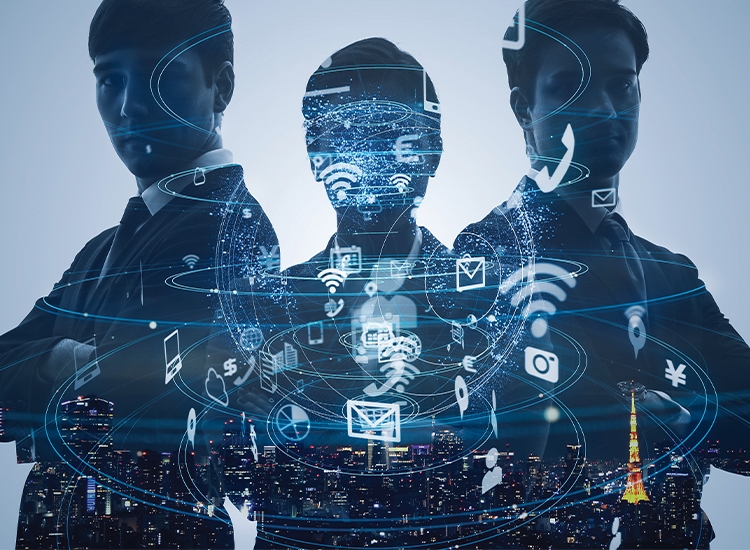Supporting guard safety with mobile technology
Leaders in security know your officers are your success or your failure. They’re your brand ambassadors, or they’re a liability to you.
It’s a weighty responsibility you carry through them – one you can make easier by equipping them with the right tools, training and support, so they execute the service how you need them to, and how your clients expect them to.
When thinking of the frontline officer’s tools, those which keep your guards safe and successful, it’s easy to default to the obvious. Depending on a given contract, tools can include protective or heated vests, first aid kits, flashlights or dogs. COVID-19 altered the landscape of what services a guard fulfils at a given jobsite, and with it came additional personal protective equipment inventory like masks, gloves, protective eyewear, temperature monitoring systems and disinfecting gear. But guard safety doesn’t stop at hardware – technology, specifically mobile technology, can be just as important in your overarching safety strategies.
While the possibilities of mobile technology are boundless, let’s keep it simple and stick to two main themes.
- Mobile Technology and Communication
Dispersed workforces are just that – spread far and wide. AIs often dictate single-person or small-team tours, beats or patrols. As the nature of their work is independent and isolated, it’s important for guards to be able to send and receive communications quickly and easily no matter where they are. Mobile workforce management tools:
- Enable targeted communications to individuals or groups, depending on what message is being conveyed.
- Support duress and emergency communications and notifications.
Using smartphones, administrative staff or field-based supervisors for a long time have been able to keep guards apprised of developing situations, events, incidents, new protocols or instructions in real-time through app-based communication – and vice versa. If an incident is raised, protocols can be invoked and the necessary communications issued. This is often fully configurable. An identified network of emergency response teams, ranging from your own company leadership to the client whose jobsite is impacted, is notified depending on what protocols you’ve previously set in place, quickly and efficiently sending aid and setting into motion resolution tactics to help protect your assets in the field.
- Mobile Technology and Guard Visibility
Just like GPS can help you monitor and navigate a safe route home in your vehicle, location tracking technologies can be used to monitor and ensure safe patrols for your guards. While the specific technology itself may vary from GPS and geo-fences to Bluetooth beacon tracking or RFID and other code-based systems depending on your client and jobsite needs, knowing when your guards book on and are onsite in realtime is enormously helpful in monitoring their safety. This kind of operational visibility supports a variety of reporting and proof of service delivery, with an added layer of protection for your guards so that:
- If an incident arises, you can dispatch resolution measures to a guard’s locationaccurate within a metre, depending on which technology has been enabled.
- You can capture incident-related data using mobile-powered rich media, creating audit trails to support compliance while pinpointing larger threats or vulnerabilities.
- Your guards are protected against false claims by using location tracking-fed reporting as evidence.
In the same manner that duress signals are an important piece of mobile technology communication, location tracking technologies can also be configured to automate alerts if a guard isn’t where they’re supposed to be. In some cases, this simply helps reinforce guard accountability, but in others, automated alerts can trigger a proactive response and status check on a guard who may need assistance.
Mobile Technology in an Evolving World
Mobile technology is inherently flexible, bringing point solutions to your guards when and where they need them the most, not the other way around. This is important as we see our world evolve, especially in the era of COVID-19. Even as vaccinations continue rolling out across the globe, COVID-19’s lasting effects will likely linger in the security industry for years to come. Monitoring guard health and safety against viral threats, and not just physical ones, may still be a challenge for the foreseeable future.
Working as an office on the front line or working from the back office with the front line will never be the same again for many organisations. Mobile technology can be used to deploy simple, accessible forms for your dispersed workforce to complete before ever stepping into an office or onto a jobsite, collecting information such as health symptoms (as your compliance regulations allow) and recording a history of responses. From there, you can mitigate risk and possible exposure for your other guards or individuals at your jobsite by managing guard shifts according to health risk.
Summary
Mobile technology isn’t new; it is how a modern, successful guarding service operates in today’s environment. Mobile technology was certainly a critical factor in helping officers – and their employers – thrive in a difficult year with evolving customer needs and jobsite expectations.
What lessons can be learned from the top performers? The world has changed. How have you prepared your business to stay relevant now and into the future? If you haven’t evaluated your mobile technology strategy lately, perhaps now is the time to do so – because your competitors already might be.
Graeme Hughes
Managing Director, TEAM Software
Read more articles on Security Technology


